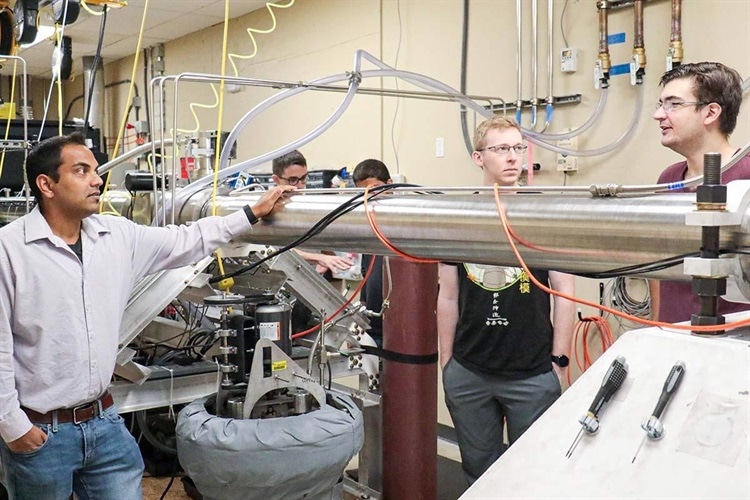
by Rick O'Connor | Oct 29, 2025
In 2011 many scientists, and executives from the oil and automobile industries, believed the energy source for the future was hydrogen. Most of the attention was focused on fuel cells that combine hydrogen and oxygen to produce electricity and emit water vapor into the atmosphere. As long as you did not use fossil fuels in the production of hydrogen, there would be no CO2 released. Another feather in it’s cap is that it produces more energy per gram than any other source of fuel – which would make it an excellent choice for aviation fuel. But there are challenges…
- it is found combined in other compounds – such as water, methane, and gasoline. So, it will take a lot of energy to produce it. More so than oil or coal.
- The electricity is produced in fuel cells, which can also be expensive.
- Whether this form of energy actually decreases CO2 levels would depend on how the hydrogen is extracted.
In 2011 there were several methods of storing hydrogen that were considered safe. Some were in operation, some were in development. It could be stored in a liquefied form or within compounds. Each of these methods posed no threats to catching fire, making their storage safer than fossil fuels. The automobile industry had developed prototypes of cars, trucks, and buses at the time. One engineer was working on a system that used pellets of aluminum-gallium alloy in water that could produce hydrogen. This could be done with the current gasoline tanks and would only require switching the fuel injector with a hydrogen injector and off we go. Large fuel cells could be used to heat and power buildings and homes. So, what happened? Why, in 2025, do we not see more of this source of energy in our lives?

Atomic Structure of Hydrogen & Periodic Table Listing
Several fossil fuel industries, such as ExxonMobil, Shell, and others, continue to state that hydrogen is in their future. The U.S. Energy Information Administration mentions that it is currently being used in industrial processing. They also mention fuel cells are currently being used to produce electricity for buildings and facilities – but as a backup source. Most of the fuel cells are using natural gas as the source of hydrogen – but some use biofuels generated from wastewater treatment plants, or landfill gas. In 2022, hydrogen still produced less than 1% of the country’s energy.
The high cost of fuel cells, and the limited number of hydrogen refueling stations, have hampered the development of fuel cell vehicles. It has been stated that people are reluctant to buy fuel cell cars if there are no refilling stations. And companies are reluctant to build refueling stations if there are no customers to use them. There are currently 60 hydrogen refueling stations in the country, all are in California. So, there has not been much movement towards the use of hydrogen since 2011.
At this point in the series on Our Environment, we have discussed the origin of humans, our dispersal across the planet, our need for resources such as food, space, and water, and our need for energy. We have discussed how these needs have stressed the environmental systems that support us – and all other creatures, and some solutions to many of these problems. But we began the series because our actions have led us to climate change – and it is time to come full circle and discuss this – which we will do in our next article.

New advancements in hydrogen fuel cells.
Photo: University of Central Florida.
References
Miller, G.T., Spoolman, S.E. 2011. Living in the Environment. Brooks/Cole Cengage Learning. Belmont CA. pp. 674.
ExxonMobil. Low Carbon Solutions. https://lowcarbon.exxonmobil.com/about-us/real-world-progress?utm_source=google&utm_medium=cpc&utm_campaign=1ELC_GAD_TRAF_OT_Non-Brand_Broad_Real+World+Progress_P3197SW&utm_content=OT_Non-Brand_General&utm_term=fuel+cell+systems&gclsrc=aw.ds&gad_source=1&gad_campaignid=21259280553&gbraid=0AAAAAp6NmRES_fRZTtbe44iCDN-OswsAJ&gclid=Cj0KCQjw8KrFBhDUARIsAMvIApbo-IZv3CmrxjiZR0r0ao9rMoFUPOtnwat2vbufe5fGKJbynITQk8oaAh5FEALw_wcB.
Hydrogen Explained; Use of Hydrogen. 2024. U.S. Energy Information Administration. https://www.eia.gov/energyexplained/hydrogen/use-of-hydrogen.php.
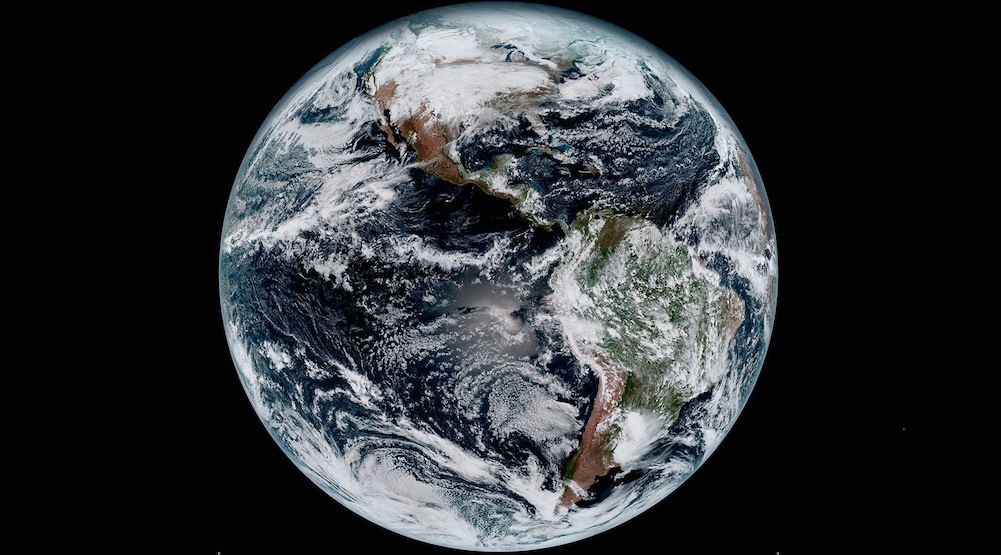
by Rick O'Connor | Oct 21, 2025
Geothermal is one source of energy that has been explored, and utilized, in recent decades. It is heat which is stored beneath the earth – either in the soil, rocks, or the fluid portion of the mantle. It has been used primarily in heating our homes and producing electricity. The amount of geothermal energy within the crust leads to it having great potential for us.
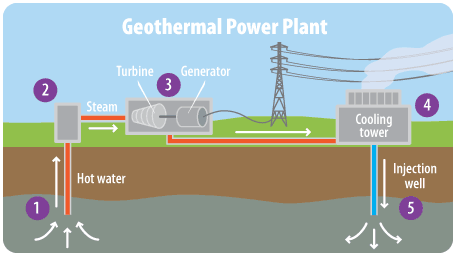
How Geothermal Energy Works – EPA
Many around the world are using a geothermal heat pump system where pipes in a closed system filled with water, or another antifreeze type fluid, buried between 10-20 feet in the yard can move heat from the ground into the home during winter, and reverse the process during summer. If the house is insulated properly, the US EPA considers this method the most efficient one for heating and cooling your home.
Iceland is famous for their use of geothermal energy. Drilling pipes beneath the earth, they are using hot steam and water to heat buildings, provide hot water, grow vegetables in greenhouses, raise fish in aquaculture ponds, and spin turbines to produce electricity. The island is, of course, an active volcano – and that helps.
In 2011 over 40 countries had developed geothermal districts which were producing about 1% of the world’s electricity. The amount of electricity generated was equal to 104 nuclear power plants. In 2022 the United States had 3,965 geothermal plants in operation – the most in the world. The majority of these are in California, Nevada, Utah, and Hawaii.
In general, geothermal has less environmental impact than fossil fuels. If located near a good source, the cost is much lower to produce. However, there are two main problems. One, the cost of tapping into the system from locations far from the sources is high. Second, we could actually remove the dry or wet steam faster than the earth can replace them. Below are additional pros and cons.
| Advantages |
Disadvantages |
| Very high efficiency |
Scarcity of suitable sites |
| Moderate net energy at suitable sites |
CO2 emissions |
| Lower CO2 emissions than fossil fuels |
Moderate to high local air pollution |
| Low cost at favorable sites |
Noise and odors (hydrogen sulfide gas) |
| Low land use and disturbance |
High cost except at suitable sites |
There is one more source of energy to look at – hydrogen – and we will explore that one in the next article.
References
Geothermal Energy Fact Sheet. The Center for Sustainable Systems. University of Michigan. https://css.umich.edu/publications/factsheets/energy/geothermal-energy-factsheet.
Miller, G.T., Spoolman, S.E. 2011. Living in the Environment. Brooks/Cole Cengage Learning. Belmont CA. pp. 674.
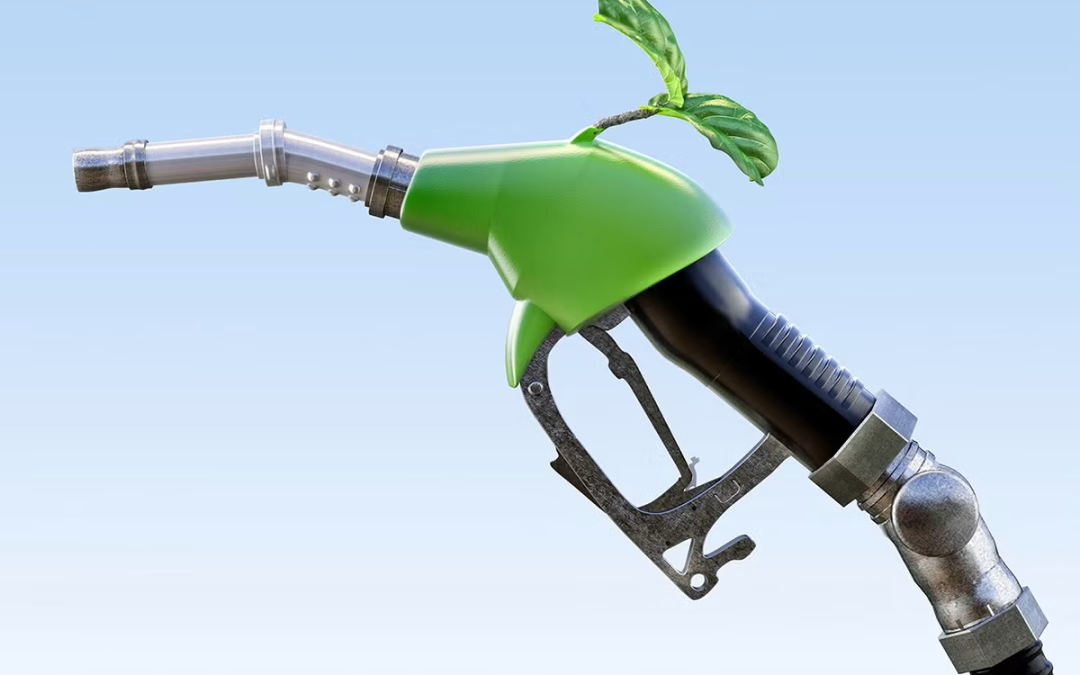
by Rick O'Connor | Oct 6, 2025
This option for providing power has not been discussed as much recently as it was a decade ago. At that time many were looking at using corn waste, used cooking oil, and animal manure as a source of energy. Some universities devoted a lot of their research dollars towards the topic. But not as much today.
You might remember that our first source of energy for heating and cooking was wood. A decade ago, some communities were considering returning to this source. However, the problems that existed hundreds of years ago still exist today – mainly, is there enough wood. It is a renewable resource, but it does not grow as fast as we use it.
One of the biofuels that did get a lot of attention a decade ago, and is still popular in some countries, is ethanol and biodiesel. This has really caught on in Brazil and, to some extent, in the United States. There are several advantages to this form of energy. (1) Countries can supply their own source of fuel and are not dependent on importing from nations who have fossil fuels. (2) If managed correctly – not removing plants faster than they can replenish themselves – there would be no increase in carbon dioxide emissions. (3) They are available now, are easy to store and transport, can be distributed through existing fuel networks, and used in existing vehicles.
However, there are some problems…
Converting farmland to biofuel farms would decrease food production and overall biodiversity. Here are some advantages and disadvantages of solid biomass.
| Advantages |
Disadvantages |
| Large potential supply in some areas |
Nonrenewable if harvested unsustainably |
| Moderate costs |
Moderate to high environmental impact |
| No net CO2 increase if harvested, and replanted sustainably |
Soil erosion, water pollution, and loss of wildlife habitat |
| Can make use of agricultural, timber, and urban waste |
Farms could compete with food crops |
Biodiesel
| Advantages |
Disadvantages |
| Reduce CO2 emissions |
Increased NO2 emissions and smog |
| Reduced CO emissions |
Higher cost than regular diesel |
| High net energy for oil palm crops |
Low net energy for soybean crops |
| Better gas mileage |
May compete with food crops and raise food prices |
| Potentially renewable |
Can make engines hard to start in cold weather |
Ethanol
| Advantages |
Disadvantages |
| High octane |
Lower driving range |
| Some reduction in CO2 emissions |
Lower net energy |
| Potentially renewable |
Higher cost |
|
Competing with food crops |
|
Higher NO2 emissions and more smog |
|
Corrosive |
|
Can make engines hard to start in cold weather |
The potential of using biofuels is still here. There are definitely some pros and cons to this form of energy for us to think about. In our next article we will look at another that has been discussed a lot – geothermal.
References
Miller, G.T., Spoolman, S.E. 2011. Living in the Environment. Brooks/Cole Cengage Learning. Belmont CA. pp. 674.

by Rick O'Connor | Sep 22, 2025
Wind power has become more popular across the planet. Though some regions of the Earth get more wind than others – it blows basically everywhere. The concept behind wind energy is the same as hydroelectric power. In hydroelectric moving water turns the turbines to generate electricity – with wind power it is moving air.

photo: Sam Ho 2022
One study conducted at Stanford by C.I. Archer and M.Z. Jacobsen in 2004 mapped the global potential for wind energy. Their data suggested that capturing only 20% of this potential energy from the world’s best sites could generate seven times more energy than was being developed in 2011 and thus could help phase out coal and nuclear power sources. Offshore wind production looks promising as well. Out there – the wind can be stronger and steadier than winds over land. Many countries have already developed offshore wind farms. Over land within the U.S., areas near the Rocky Mountains show the best promise – and many of these areas have already developed wind farms. In 2011 scientists estimated that wind farms in North Dakota, South Dakota, Kansas, and Texas alone could generate three times more energy than all of the power plants operating at that time. This looks like a promising option for fossil fuels, but there are challenges.
- Areas where wind energy is most promising have few people – the energy would have to transported to more urban sites.
- Winds do die down and a backup source will be needed in many locations.
- Studies have found that rotating wind turbines kill as many as 40,000 birds and bats each year in the U.S. alone.
- Many urban and coastal communities resist them because they are unsightly and noisy.
Others
| Advantages |
Disadvantages |
| Moderate to high energy yield |
Steady winds needed |
| High energy efficiency |
Backup systems needed during low wind events |
| Moderate capital costs |
High land use required |
| Low electricity costs |
“Visual” pollution |
| Very low environmental impact |
Noise when located near populated areas |
| No carbon dioxide emissions |
Can kill birds and bats |
| Can be located at sea |
|
| Land below turbines can be used for agriculture |
|
In the next article we will look at using biomass as an energy source.
Reference
Miller, G.T., Spoolman, S.E. 2011. Living in the Environment. Brooks/Cole Cengage Learning. Belmont CA. pp. 674.
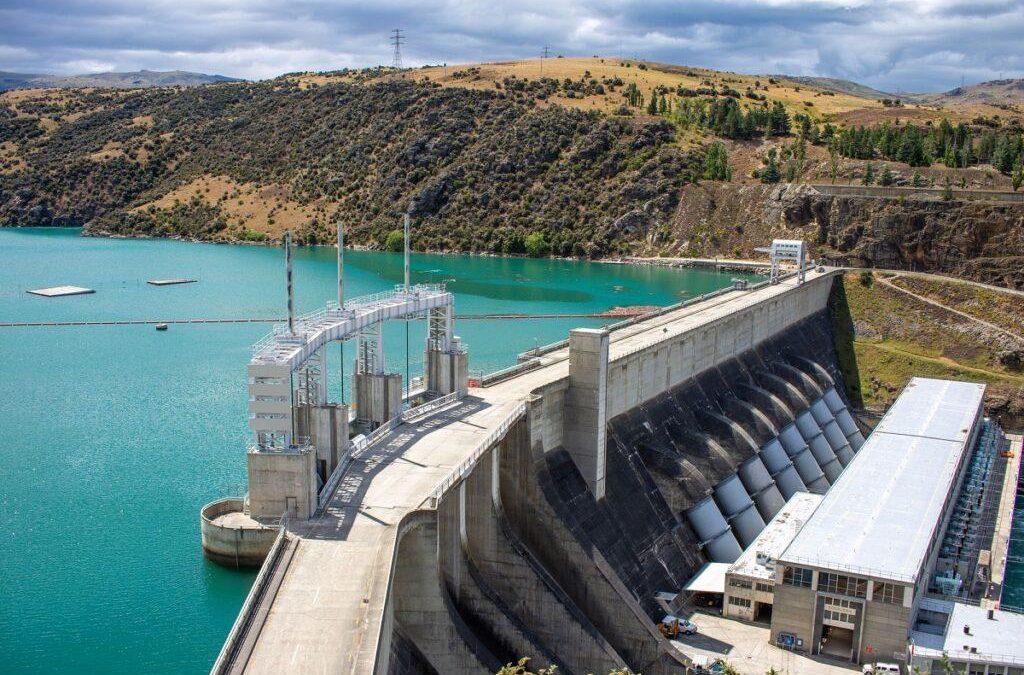
by Rick O'Connor | Sep 15, 2025
This form of renewable energy has been used for decades. Water at higher elevations flows towards the sea. Placing a hydroelectric dam on such a waterway the flowing water can turn the turbines and generate electricity. It is the number one source of renewable energy around the world, and – when including environmental costs – one of the least expensive way to generate electricity.
In 2011 much of the world was looking towards increasing hydroelectric power. Today it is the number one form of renewable energy around the world and growth is predicted to remain stable through 2030. One issue of hydropower is droughts generated by climate change. The are other concerns as well – such as the production of methane from anaerobic decomposition from submerged plants on the bottom of the reservoirs, and the build up of silt within the turbines coming from the rivers flowing through them.
| Advantages |
Disadvantages |
| Moderate to high net energy |
High construction costs |
| High efficiency (80%) |
High environmental impact from flooding due to the reservoir |
| Low-cost electricity |
High CO2 emissions from rapid biomass decay in shallow tropical reservoirs |
| Long life span |
Danger of collapse |
| No CO2 emissions during operation in temperate areas |
Uproots people |
| Provides irrigation water |
Decreases fish harvest below dam |
| Reservoir useful for recreation |
Decreases need silt below dam |
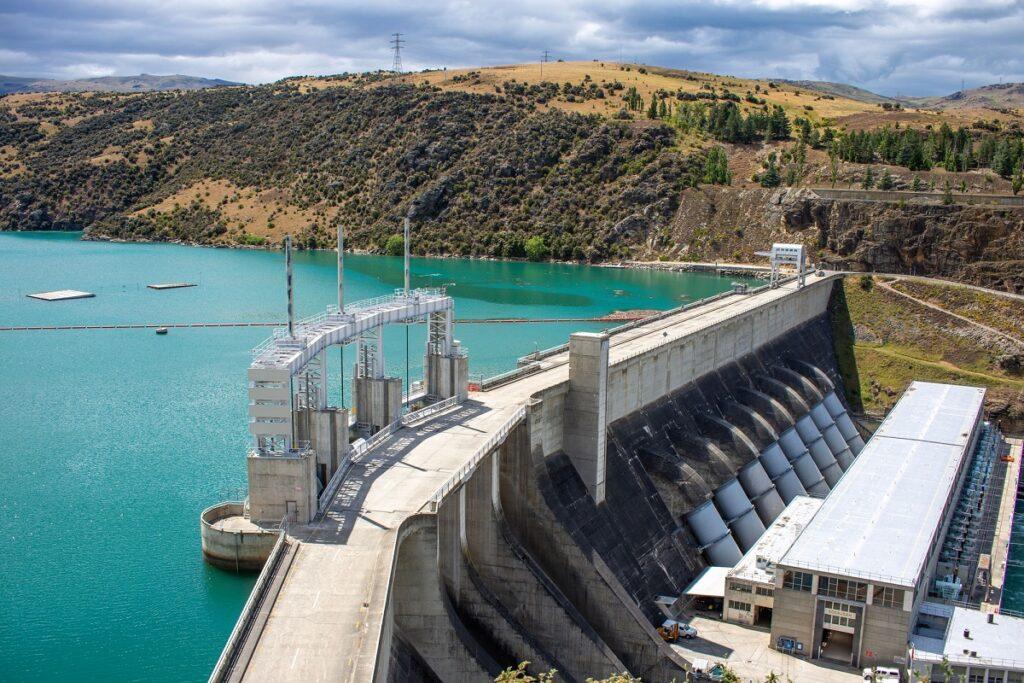
Hydroelectric power has its pros and cons.
Photo: Energytheory.
References
Projected Costs of Generating Electricity by 2020. International Energy Agency. https://www.iea.org/reports/projected-costs-of-generating-electricity-2020.
Hydroelectricity. International Energy Agency. https://www.iea.org/energy-system/renewables/hydroelectricity.
Miller, G.T., Spoolman, S.E. 2011. Living in the Environment. Brooks/Cole Cengage Learning. Belmont CA. pp. 674.

by Rick O'Connor | Sep 8, 2025
We will begin our look at solar energy by explaining there are two forms – passive and active. In passive solar energy the well insulated building is heated directly from the sun without the need for additional technologies. In active solar energy the build has solar panels. These panels have a heat-absorbing fluid which collects solar energy and can use it directly within the house or store it for later use. Here are some advantages and disadvantages of passive or solar heating.
| Advantages |
Disadvantages |
| Energy is free |
Need access to the sun 60% of the time |
| Quick installation |
Sun can be blocked by trees and other structures |
| No CO2 emissions |
Need a heat storage system |
| Very low air and water pollution |
High cost |
| Very low land disturbance |
Active systems need maintenance and repairs |
|
Active collectors can be unattractive |
Another problem is that most solar energy designs are designed to heat the buildings, not cool – but there are technologies that can help with this – such as:
- Block summer sun with window overhangs and awnings.
- Use a light-colored roof to reflect as much as 80% of the sun’s heat.
- Suspend reflective insulating foil in the attic to block heat from radiating into the house.
- Place plastic earth tubes into the ground where the earth is cool year-round. Tiny fans can pipe cool air into the house when needed.
- Use geothermal heat pumps.
Can solar energy be used for high-temperature heat demands – such heating water and generating steam for electricity?
It can, but there are trade-offs.
| Advantages |
Disadvantages |
| Moderate net energy |
Low efficiency |
| Moderate environmental impact |
High costs |
| No CO2 emissions |
Needs back up and storage systems |
| Fast construction (1-2 years) |
Needs access to the sun most of the time |
|
Vulnerable to sabotage |
|
Land use that could be used for other resources |
Solar cells can be used to produce electricity directly. This electricity can be used directly within the building or stored for later use. This electricity can be connected to the grid and some countries require power companies to purchase excess electricity produced by homes placed on the grid. These solar cells have no moving parts, are safe and quiet, require little maintenance, produce no pollution, and last as long as conventional fossil fuel and nuclear energy sources. There are some issues…
| Advantages |
Disadvantages |
| Fairly high net energy yield |
Need access to the sun |
| They work on cloudy days |
Need storage and back up systems |
| Quick installation |
High costs |
| Easily expanded or moved |
High land use |
| No CO2 emissions |
DC current must be converted to AC |
| Low environmental impact |
|
| Last 20-40 years |
|
As many already know, Florida Power and Light has already invested in this technology – as has the U.S. military. In our next article we will look at producing electricity from the water cycle.
References
Miller, G.T., Spoolman, S.E. 2011. Living in the Environment. Brooks/Cole Cengage Learning. Belmont CA. pp. 674.










